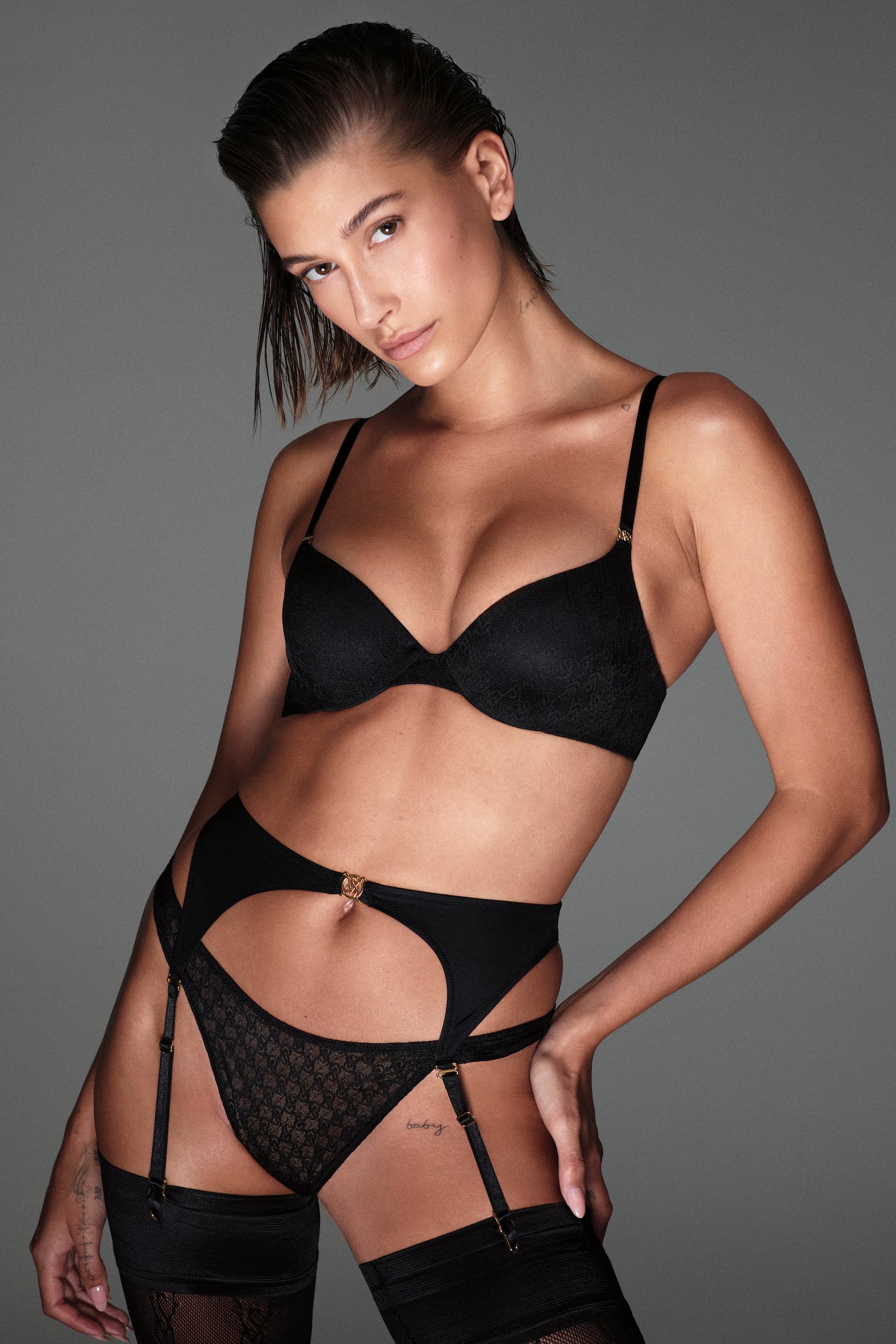
The Business of Fashion
Agenda-setting intelligence, analysis and advice for the global fashion community.

Agenda-setting intelligence, analysis and advice for the global fashion community.

The radical transformation of Victoria’s Secret is over.
The American lingerie chain has spent the last two years overhauling its hyper-sexualised image in a bid to regain cultural relevance and win back young consumers who preferred more on-trend upstarts like Savage X Fenty and Parade.
There were some successes, including a campaign to launch the “new” Victoria’s Secret featuring Megan Rapinoe, Valentina Sampaio and other spokesmodels who would never have been invited to walk as “Angels” in one of the brand’s televised fashion shows. But favourable reviews from online critics never translated into sales: the brand is projecting revenue of $6.2 billion this fiscal year, down about 5 percent from the previous year and well below the $7.5 billion from 2020.
More recent campaigns have featured models like Hailey Bieber and Emily Ratajkowski, who would have fit right in with Heidi Klum and Adriana Lima at the 2007 show, as well as new-look ambassadors, including plus-size models Paloma Elsesser and Ali Tate-Cutler. Victoria’s Secret: The Tour ‘23, an attempt to revive the runway show format that launched on Amazon Prime Video last month fell somewhere in between the personification of male lust of the brand’s aughts-era heyday and the inclusive utopia promoted by its many disruptors.
ADVERTISEMENT

But in a presentation to investors in New York on Thursday, it was clear which version of the brand Victoria’s Secret executives see as its future.
“Sexiness can be inclusive,” said Greg Unis, brand president of Victoria’s Secret and Pink, the company’s sub-brand targeting younger consumers. “Sexiness can celebrate the diverse experiences of our customers and that’s what we’re focused on.”
The prime objective: improve profitability and cross back over $7 billion in annual sales. That means investing in new categories, including activewear and swim, updating its nearly 1,400 Victoria’s Secret and Pink stores and opening 400 new locations outside North America. Costs will also be cut and, judging from the messaging on Thursday, fewer risks taken when it comes to the brand’s image.
“Despite everyone’s best endeavours, it’s not been enough to carry the day,” said chief executive Martin Waters.
In his presentation, Waters pointed to a challenged retail sector and a consumer who’s choosing off-price alternatives as her wallet continues to be squeezed by inflation.
To win that customer back, Victoria’s Secret is offering its shoppers products beyond bras, underwear and pyjamas. According to Unis, the intimates brands generating the greatest growth right now tend to have a larger apparel assortment.
For Victoria’s Secret, this means returning to swimwear and activewear, two categories that the retailer exited in recent years. At one point, activewear was a $500 million business for the company, Unis said, with 16 percent share of the sports bra market. Today, that segment is far smaller and only commands 4 percent share.
“When we exited the swim business, we didn’t lose the customer, but what we did lose was the trip she made to buy swim apparel and also spent on core,” Unis said.
ADVERTISEMENT
Additionally, the brand intends to increase other apparel offerings such as loungewear, sweaters, slip dresses and corset tops — pieces that are adjacent to its forte in sleepwear and lingerie, Unis said. Within Pink, Victoria’s Secret will focus on improving the assortment of fleeces, sweatpants, tracksuits and other casual pieces.
Perhaps the most drastic departure from the Victoria’s Secret of the past is its new brick-and-mortar look. The brand began revamping its retail locations in 2021, eliminating the dark, austere feel of the stores that may have been trendy in the aughts but no longer resonates with today’s shoppers.
The retailer’s “store of the future” features bright but warm lighting, soft decor, a wider entryway and an overall welcoming atmosphere. Even the fixtures are smaller and rounded, painted in a soft pink tone to evoke intimacy with the consumer, said Albert Gilkey, senior vice president of store design and construction at the company.
Victoria’s Secret began its modern makeover in part due to competition from digital newcomers, from ThirdLove to Parade, that wooed consumers with inclusive marketing and progressive language.
The threat of their disruption, however, has largely diminished in recent months as the direct-to-consumer bust continues to play out and digital marketing costs have become unsustainable for brands with only an e-commerce presence. Parade was recently sold to Ariela & Associates International, a bra licensing company that manufactures products for Fruit of the Loom.
But Rihanna’s Savage X Fenty remains a force to be reckoned with, and Aerie poses steep competition for Pink. And a potentially even more formidable contender is gaining ground: Skims, the shapewear brand co-founded by Kim Kardashian, raised funding in July at a $4 billion valuation. The brand projects it will reach $750 million in sales this year, well below Victoria’s Secret’s $6 billion-plus but far ahead of many other would-be challengers. An IPO would give Skims the resources to rapidly open stores and take on Victoria’s Secret directly.
Skims did not go unmentioned Thursday. During a store tour for in-person attendees of Victoria’s Secret’s investor day presentation, one analyst brought up the brand as Unis outlined the retailer’s apparel ambitions.
“Have you seen their knit dresses?” she said. “I own four of them.”
ADVERTISEMENT
Unis was unfazed. How Victoria’s Secret ventures into apparel will be conservative in manner, he said, and will follow a test-and-learn approach.
For all its problems in recent years, Victoria’s Secret is still the largest underwear retailer in North America, with about 20 percent of the market share, according to its own analysis.
“We’ve been insufficiently differentiated in this difficult market,” Waters said. “[But] our ambition of being the world’s leading fashion retailer of intimates apparel is unchanged.”
The Sycamore Partners-backed lingerie brand may be losing relevance, but no successor in the highly competitive women's intimates market has emerged.
Under new ownership and management, the lingerie giant will have a chance to truly transform itself and reclaim the market share it lost to body positive competitors.
Creative director Ed Razek is exiting Victoria’s Secret as the brand suffers from sinking sales and media reports of past links to sex offender Jeffrey Epstein. But the root of the problem may be the very thing that made the company so successful in the first place: billionaire L Brands chairman Les Wexner’s tight grip on power.

Cathaleen Chen is Retail Correspondent at The Business of Fashion. She is based in New York and drives BoF’s coverage of the retail and direct-to-consumer sectors.
Designer brands including Gucci and Anya Hindmarch have been left millions of pounds out of pocket and some customers will not get refunds after the online fashion site collapsed owing more than £210m last month.
Antitrust enforcers said Tapestry’s acquisition of Capri would raise prices on handbags and accessories in the affordable luxury sector, harming consumers.
As a push to maximise sales of its popular Samba model starts to weigh on its desirability, the German sportswear giant is betting on other retro sneaker styles to tap surging demand for the 1980s ‘Terrace’ look. But fashion cycles come and go, cautions Andrea Felsted.
The rental platform saw its stock soar last week after predicting it would hit a key profitability metric this year. A new marketing push and more robust inventory are the key to unlocking elusive growth, CEO Jenn Hyman tells BoF.